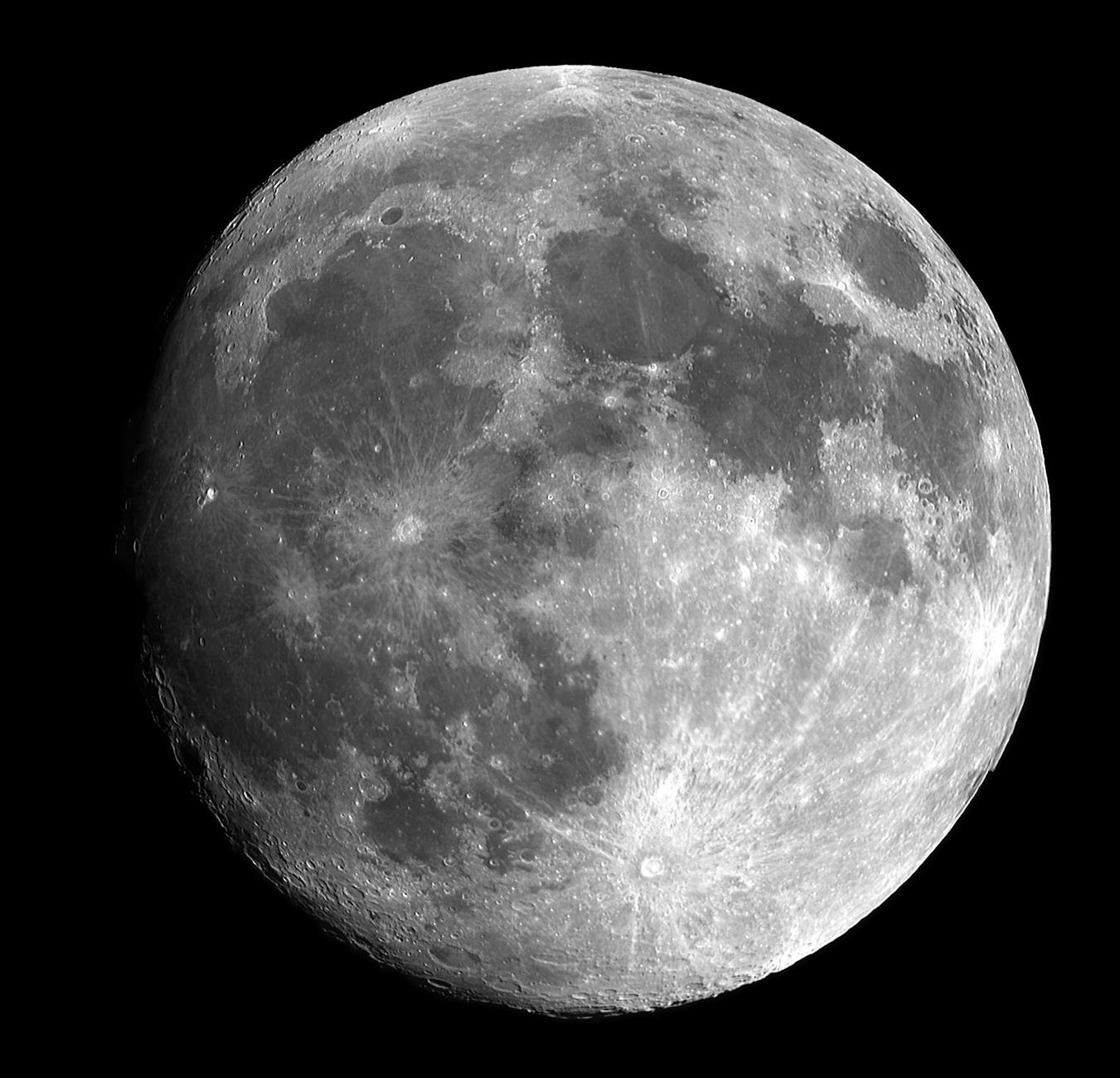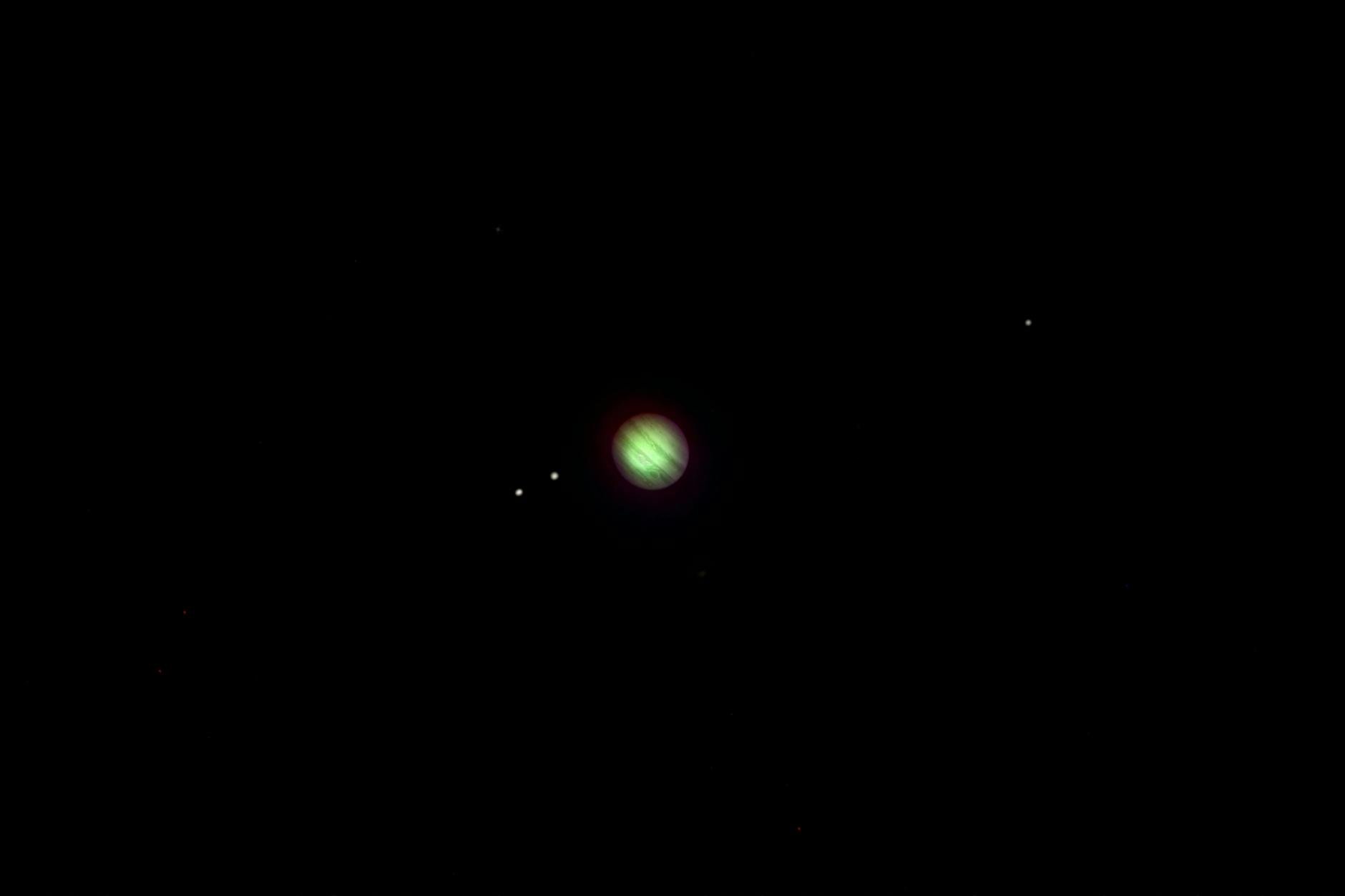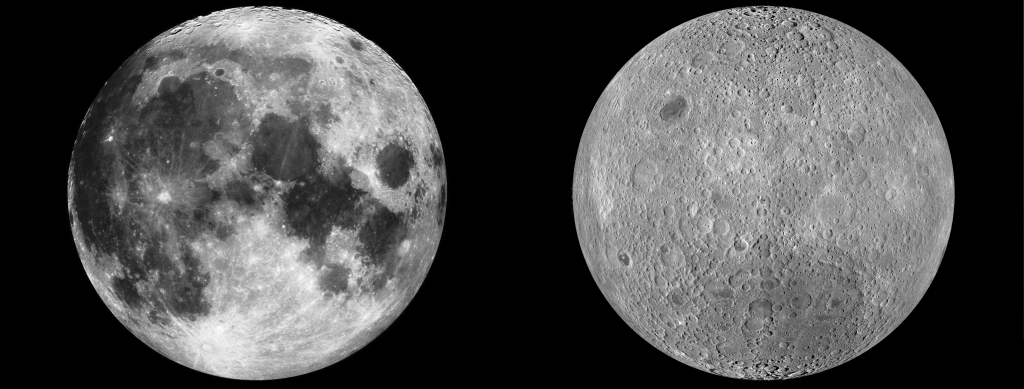“Supermoon October 2024” is not a super-fact post but some fun facts about the Moon. It is a super-moon post instead.
As many of you probably have read, we currently have a so-called supermoon (October 17 & October 18). The moon’s orbit around earth is not a perfect circle but slightly elliptical. Therefore, the moon’s distance to earth varies.
A supermoon is when a full moon occurs when the moon is at its closest point to Earth, called perigee, making it appear larger and brighter than usual. Or more correctly, the term supermoon is usually used to describe a full moon that comes within at least 90% of the perigee. Since this is a special moon event, I took out my little telescope and looked at the moon and its craters. I also took a look at Jupiter, and I saw three of the four Galilean moons.


I thought I might as well mention a few interesting facts about the moon.
There is no dark side of the moon
This is a very common misunderstanding. The moon is always showing the same side towards us (or almost exactly the same side). When there is a full moon the backside, or far side, of the moon is dark, but that is not the case when the moon is half, or a crescent, etc. When the moon is new, the far side / backside is “full” from sunlight. If you wondered, NASA and other space agencies have photographed the far side of the moon.

Below is a youTube video showing an animation composed of actual satellite photos by NASA.
A few comments about this animation. You see no stars because the sun is shining, and the earth is also quite bright. The reason you don’t easily see stars during the day is not because the sky is blue but because there is too much light to see them. The sun ruins the starry sky. In addition, stars are not easily captured by cameras when there is ambient light. And again, of course, contrary to the belief of some, the backside of the moon is not always dark.
The far side of the moon is different
As you can see in the YouTube video and the enhanced photo above, the far side looks different from the nearside and it is different in appearance and terrain. The near side of the moon has large, dark, flat-lying basins called maria. They look like oceans. The far side is a lot more rugged and covered by lots of craters. Another difference is that the far side of the moon has a much thicker crust compared to the near side.

The moon is drifting away from earth at about 3.8 centimeters per year
The moon is moving away from earth due to the gravitational forces between the moon and earth, which also causes tidal bulges in the Earth’s oceans and the moon. Back in high school I took a physics test on which you had to calculate how much the moon was moving away from earth based on the size of the tidal waves on earth. I did not solve that one, but not many did. The calculation made perfect sense though and some geniuses got it.
NASA found water on the moon
In 2020, NASA announced the discovery of water on the sunlit surface of the Moon. You can read about it here.

The moon was likely created by a celestial collision : The most widely accepted explanation for the existence of the moon is that the Moon was created when a planet-like object, the size of Mars slammed into Earth, soon after the solar system began forming. That was about 4.5 billion years ago.


Hi Thomas, another interesting post. The moon is fascinating. People do believe some very weird things, don’t they?
LikeLiked by 1 person
Thank you so much Robbie. Yes I agree that it is weird to believe that the far-side, the side we don’t see, is always dark, and yet that belief pops up in Facebook comments every now and then.
LikeLike
People don’t think about things.
LikeLiked by 1 person
Yes you are right. Another one is when people see a black sky without stars and instantly conclude that it is fake. That is a very common one, including NASA photos from the moon with astronauts standing under a black sky with no stars, but it is during the day. The sky being blue, yellow, red or black has nothing to do with why stars won’t show up easily, it is the ambient light, like the sun, and cameras make it “worse”.
LikeLike
Yes 👍🤗
LikeLiked by 1 person
Interesting indeed, Thomas! Thanks for sharing. Light and blessings to you*
LikeLiked by 1 person
Thank you so much Susana and light blessings to you too.
LikeLiked by 1 person
A fascinating NASA video.
LikeLiked by 1 person
Yes I agree, that is a fascinating video.
LikeLiked by 1 person
Great post, Thomas:) The moon fascinates me, and I noticed last night it was almost full. Congrats on solving how much the moon is moving away from Earth, too. I will be looking up tonight 🙂
LikeLiked by 1 person
Yes as I understand, today is the official day of the full moon / supermoon. I will be looking up tonight too and probably with my little telescope again.
LikeLiked by 1 person
Thanks for this fascinating, informative article, Thomas! I think the phrase “Dark Side of the Moon” was popularized by the band Pink Floyd. 🙂
https://www.youtube.com/watch?v=DLOth-BuCNY
LikeLiked by 1 person
Yes I know that song very well and perhaps they have quite a bit to do with that misunderstanding. Thank you so much Debbie.
LikeLike
Java Bean: “Ayyy, that sounds like it was a big collision that made the moon! I am not sorry we weren’t around for that!”
LikeLiked by 1 person
Ha ha You are right. That would have been a stressful day. BTW I am sorry for the late reply. I am having problems with legit comments going to spam and I forgot to check for a while. I truly appreciate all your comments.
LikeLike
Very interesting, Thomas. I had no idea that the far side of the moon has a thicker crust. We had a great full moon last night and, after a few days of overcast skies, a clear view.
LikeLiked by 1 person
It is a bit strange. The near side of the moon has a crust that on average is 43 miles / 70 kilometers thick and the far side has a crust that on average is 93 miles / 150 kilometers. They believe this difference is rooted in the fact that the moon was created in a collision. BTW I am sorry for the late reply. Like I told the previous commentor, I am having problems with legit comments going to spam and I forgot to check for a while. As you know, I truly appreciate all your comments.
LikeLike
Fascinating facts Thomas.. It looked super big over here in England last night 🙂 ❤
LikeLiked by 1 person
Thank you Sue. It was bigger than usual here too. I read that a supermoon is 14% than an average full moon. I watched it with my telescope (and Saturn, Jupiter and the Galilean Moons).
LikeLiked by 1 person
Cool, Thomas. I knew some of this, but didn’t know how the moon came to be. I just thought it was always there, and for all human life so it has. I like the idea that when I look up at the moon, I’m seeing the very same one that the first life looked upon.
LikeLiked by 2 people
Thank you Diane. I agree that is a fascinating thought: when we look up at the moon, we are seeing the very same one that the first life looked upon.
LikeLiked by 1 person
🙂
LikeLiked by 1 person
Driving back home from California, this huge Supermoon suddenly appeared above the mountains. It was a spectacular sight. Cars pulled over to watch it rise. The weather was cold, windy, cloudy, eerie, and Halloweenish! I loved it.
LikeLiked by 1 person
We had clear skies here, and it was beautiful, but what you saw with the Halloweenish background, sounds spectacular. I wish I could have seen it.
LikeLike